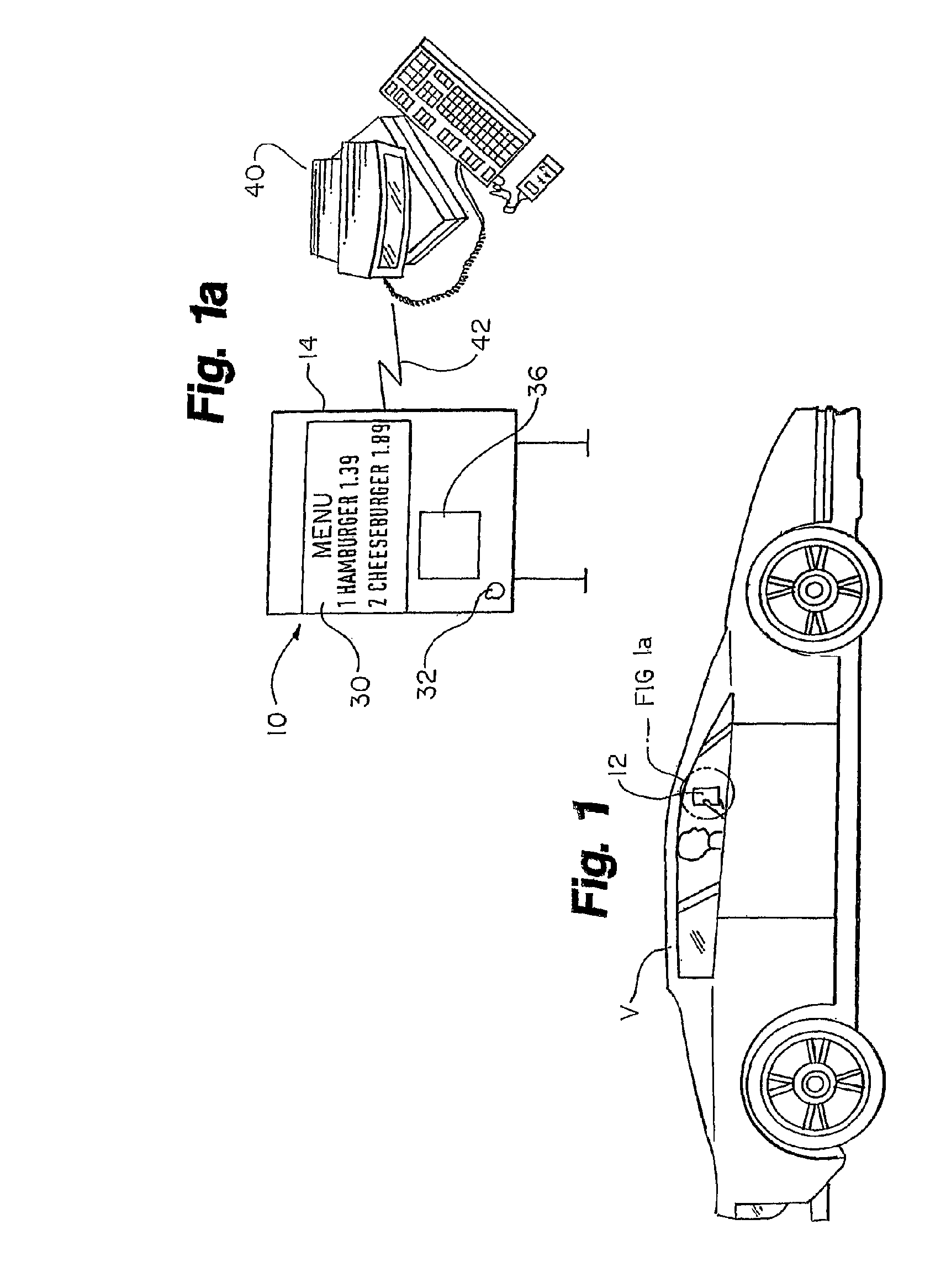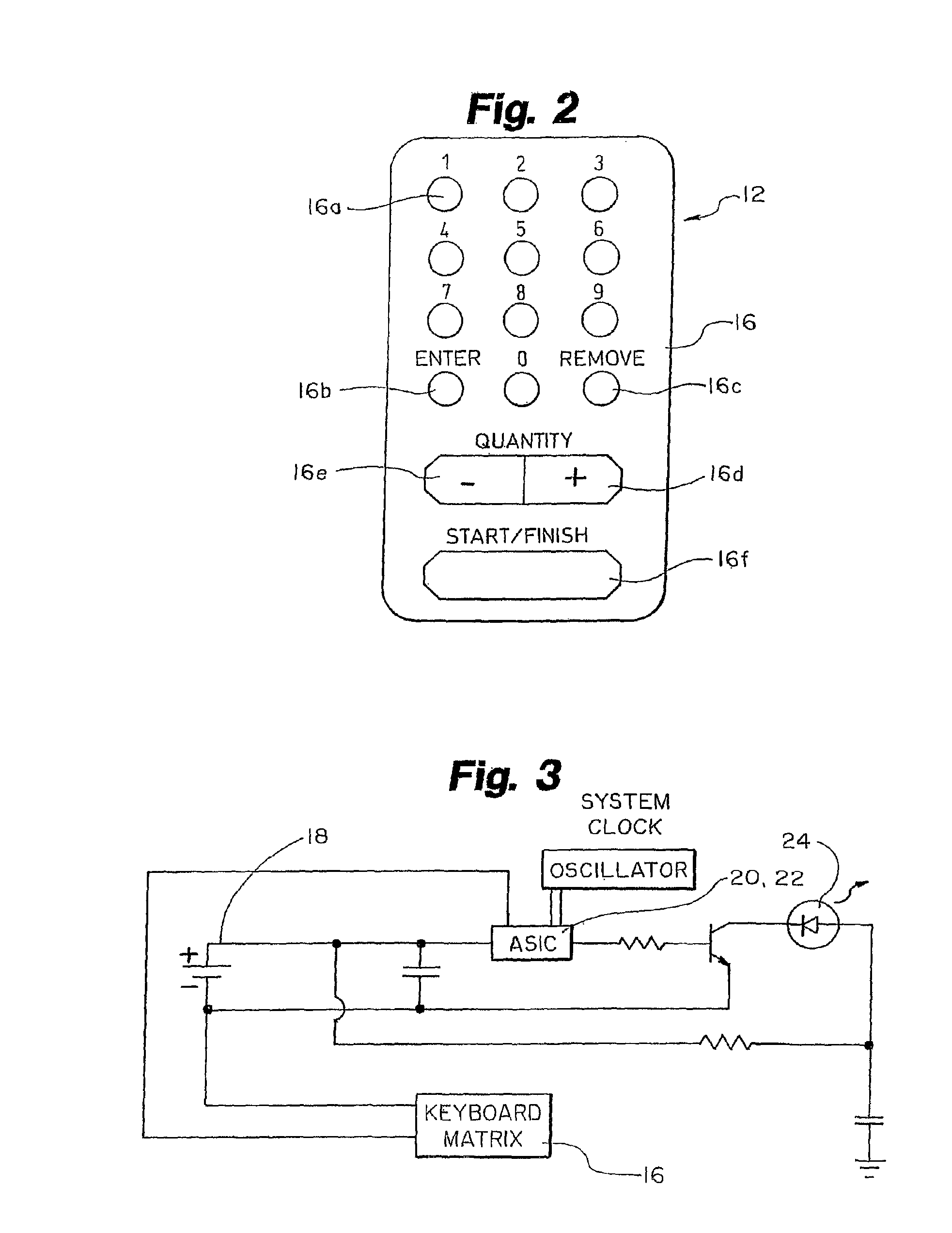Remote ordering device
a technology of remote ordering and ordering devices, applied in the field of remote ordering systems, can solve the problems of loss of customer goodwill, poor quality of these microphones, miscommunication and errors in orders, etc., and achieve the effects of saving labor expenses, saving time at the register, and more accurate orders
- Summary
- Abstract
- Description
- Claims
- Application Information
AI Technical Summary
Benefits of technology
Problems solved by technology
Method used
Image
Examples
Embodiment Construction
[0067]The remote ordering system for a restaurant drive-through lane of the present invention is generally designated in the Figures as reference numeral 10.
[0068]The remote ordering system 10 comprises an input device 12 and a drive-up ordering station 14. The input device 12 is unconnected to the drive-up ordering station 14, and the input device 12 is used from inside the vehicle V. Preferably, the input device 12 is handheld and is transportable away from the drive-up ordering station 14. Multiple input devices 12 may be used, with a separate device being assigned to each customer. In this embodiment the input device 12 is preferably used within direct line-of-sight of the drive-up ordering station 14. That is, it is not intended that the devices operate while greatly separated, as for example over a telephone network.
[0069]Preferably, the input device 12 has a keypad 16, battery 18, a first memory 20, a first processor 22 and a transmitter 24. The first memory 20 and the first ...
PUM
 Login to View More
Login to View More Abstract
Description
Claims
Application Information
 Login to View More
Login to View More - R&D
- Intellectual Property
- Life Sciences
- Materials
- Tech Scout
- Unparalleled Data Quality
- Higher Quality Content
- 60% Fewer Hallucinations
Browse by: Latest US Patents, China's latest patents, Technical Efficacy Thesaurus, Application Domain, Technology Topic, Popular Technical Reports.
© 2025 PatSnap. All rights reserved.Legal|Privacy policy|Modern Slavery Act Transparency Statement|Sitemap|About US| Contact US: help@patsnap.com



